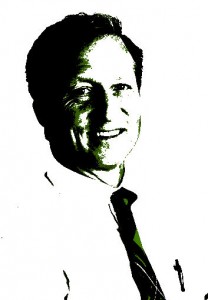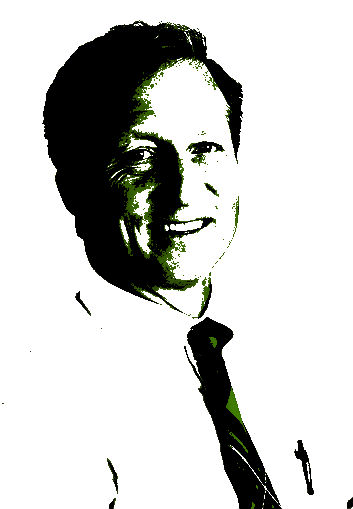
After years of inaction and public unawareness, the environmental movement has recently started to gain momentum, in no small part because of the unexpected and spectacular entrance onto the scene of a single person: Tom Steyer. Steyer, whose wealth and recent political involvement have caused many to herald him as the liberal equivalent of the Koch brothers, is positioning himself to play a highly influential role in the upcoming midterm elections.
Before his arrival, environmentalists experienced disappointment after disappointment. They found it very difficult to convince the American people that climate change was an important issue, and there was no major political force or crisis that had the power to make it a priority. In an era of Citizens United v. Federal Election Commission and big money politics, environmentalists also lacked a financial heavyweight who could go toe-to-toe with the likes of the Koch brothers —energy titans with deep pockets. The Kochs’ super PACs remain committed to the status quo of energy production and actively fight any attempt to mitigate or adapt to climate change. In addition, the lack of media consensus on the issue contributed to the spread of misinformation and inserted doubt into the minds of many Americans. It seemed that climate change was a non-issue that, given the political climate and highly partisan nature of Washington, was destined to linger on the fringes of political relevance while its real world impacts went unleashed and unchecked.
Some environmentalists, however, have become cautiously optimistic over the last few years. The most recent data from the Yale Project on Climate Change Communication indicates that the American public has — with the exception of some passionate laggards — mostly been convinced that climate change is an important issue and that action needs to be taken immediately. As of February 2014, a Pew survey reports 70 percent of Americans believe that climate change is happening, representing a significant and promising increase from 57 percent in 2009 (although public opinion is still split 50-50 on the question of whether climate change is caused by human actions). In addition, the Yale Project found that a whopping 83 percent of the American public wants the United States to take unilateral “action on global warming” even if that means “economic cost.” In short, the last few years have seen the environmental cause make clear inroads in the court of public opinion.
Now, environmentalists also have a billionaire mega-donor and charismatic champion of their own who many believe can fundamentally change the narrative on climate change.
In many ways this champion came out of nowhere before jumping into environmental politics. The product of a privileged background, Steyer was educated at Phillips Exeter Academy, an undergraduate degree at Yale University, and an MBA at the Stanford Graduate School of Business. He was a rising star at stalwart Wall Street firm Goldman Sachs before leaving to start his own wealth management firm, Farallon Capital. Under his stewardship, Farallon became one of the most successful hedge funds in the United States and Steyer amassed a fortune of nearly $2 billion.
After witnessing decades of political inaction on environmental issues, he decided to channel his considerable resources into political activism. Even though he certainly had a few decades left at Farallon and was not under any pressure to leave, he resigned abruptly in 2012. After witnessing decades of political inaction on environmental issues, he decided to channel his considerable mental and material resources into political activism, focusing mainly on promoting renewable energies. In addition to establishing plans to commit a large part of his fortune to politics, Steyer also signed The Giving Pledge, a movement among the ultra-rich compelling individuals to pledge at least half of their wealth in donations to worthy causes.
Although Steyer underwrote nearly $50 million of grants to his alma maters of Stanford and Yale for renewable energy research throughout his time at Farallon, his first major foray into politics was towards the end of his tenure. In 2010, he played a vital role in defeating California’s Proposition 23, an initiative that would have cancelled the implementation of key environmental measures that were designed to kick-start the renewable energy industry in California and cut carbon emissions. In what was his first clash with the Koch brothers, who were strong supporters of the proposition, Steyer donated $5 million to ultimately help notch a vital win for environmentalists. As a reward for his efforts and to give him a platform to increase support for his issues — as well as continued mega-donations — Democratic Party leadership even chose him to give a speech at the 2012 National Convention.
It was a platform Steyer did not waste. Although there have not been many key races since the last election cycle, he asserted himself with multimillion dollar donations in two of the most important ones: the 2013 Massachusetts special election to replace former Senator John Kerry and the 2013 gubernatorial race in Virginia. In both cases, his pro-environment candidates won. In Massachusetts, Senator Ed Markey defeated pro-Keystone challengers in the primary and general election. Markey, a strong supporter of clean energy and an unofficial leader of the campaign to end subsidies for oil companies, is considered to be one of the greenest members of the US Senate. The Virginia governor’s race was a very narrow victory for Democrat Terry McAuliffe, who defeated vocal climate change skeptic Republican Ken Cuccinelli.
The sum total of these efforts has granted Steyer a staunch following in environmentalist circles, with the notable advocate and founder of 350.org Bill McKibben declaring, “After years of watching rich people manipulate and wreck our political system for selfish personal interests, it’s great to watch a rich person use his money and his talents in the public interest.”
While no shortage of adulation has pooled around Steyer on account of his green thumb, a substantial number of critics have seen it as an iron fist. Many Republicans, in statements that Democrats would consider ironic, have criticized Steyer for corrupting politics with the introduction of corporate and special-interest money. Others have noted his hypocrisy and point out that he may be poised to profit from the policies that he supports. Indeed, since Steyer has a large personal investment in green energies, any transition to renewable energy sources would look kindly on his finances. Furthermore, while at Farallon, Steyer’s invested in carbon-rich energy sources like coal and oil and, even though the exact numbers are unclear, he made tens of millions of dollars off of these investments. In addition, many of the projects involved outsourcing energy production from the United States to the Philippines and other parts of the developing world, which are prone to abusive labor laws. Some have postulated that the whole campaign is really out of greed and contend that Steyer is trying to position himself for a government appointment or a future campaign for public office.
Amongst the usual financiers of the Democratic Party, Steyer has pledged by far the most money this election cycle. Regardless of Steyer’s ultimate benefit, he will undoubtedly play a prominent role in the upcoming 2014 midterm elections. Amongst the usual significant financiers of the Democratic Party, including George Soros and Warren Buffett, Steyer has pledged the most money this election cycle — a princely $50 million — and is aggressively pursuing other donors to add $50 million more.
As such, it’s clear that Steyer, along with NextGen Climate — his super PAC — hope to fundamentally change the role of environmental issues in politics. They still have a lot of work to do. Even though most Americans believe that climate change is real and its effects are already happening, it has yet to reach the critical mass at which belief creates action. The latest Gallup polling from March 2014 shows that just 36 percent of Americans believe that it will be a “serious threat” during their own lifetimes. When compared to other major issues that the American public thinks should be addressed, climate change ranks second to last, behind the likes of the economy, education, healthcare and immigration. In a country battered by debates over healthcare, the continued fallout from recession and the education of their children, the environment has a tough a time attracting that kind of attention.
Steyer is certainly aware of this and is thus highly pointed about where to allocate his resources. While he supports all green candidates, he is looking to put his money where the mouths are. His most immediate goal is defeating the construction of the Keystone XL oil pipeline, which would run from the oil sands of central Canada all the way down to the Gulf Coast of the United States, where it would be refined. Pipeline supporters contend that it will bring numerous jobs to the United States and help make the country energy-independent with only negligible environmental effects. Meanwhile, environmentalists like Steyer contend that since peak oil may be a thing of the past and that the level of greenhouse gases in the atmosphere is already above what scientists believe to be the critical threshold, now is not the time to invest in carbon-based energies. Instead, the reasoning goes, investment should be channeled to cleaner, renewable energy sources. As perhaps the most high-profile environmental clash today, the fate of the project will likely be a defining moment for the United States’ relationship to concerning fossil fuels, energy policy and the value of protecting the environment versus economic development.
Steyer is markedly different than other major donors in that his loyalties are not to a political party but to a cause. The Obama Administration has delayed its final decision on the pipeline until after the midterm elections, making it poised to become a defining issue that may well be decided based on the election results. At the moment, a large majority of Americans (61 percent according to the latest Rasmussen poll) support the pipeline’s construction. Because of this, Steyer has a lot of ground to make up relatively quickly and has already developed an advertising strategy designed to do just that. He is channeling the majority of his money to the Midwest, which is home to several competitive races and the potential location of the pipeline itself. Steyer has pledged to support all candidates with a green track record, but many candidates whose stances are unknown or potentially flexible have a hard decision to make: If they side with Steyer they would gain access to his vast fortune, which may be critical to their chance of winning, but supporting the construction of the pipeline for economic reasons would give them the power of having public opinion behind them. In some ways, this may create an ideological rift within the Democratic Party. Many Democrats do not believe that Keystone is as simple as Steyer makes it out to be and feel compelled to support it because it would bring jobs to their states.
Ultimately, the results of the races this November will have a decisive say in the direction of federal environmental policy over the next decade. Competing with the likes of the Koch brothers’ and other wealthy conservatives’ leading Super PACs to try to win over an American public that is skeptical about many of his positions, Steyer is gambling on the chances he can have a positive impact. While it is too soon to tell exactly what impact the flow of big money into politics will have, Steyer hopes to replicate his hedge fund success in the arena of environmental activism. He can only hope the American electorate put the odds in his favor.
